Winter Wonderland on a Budget: Energy-Saving Hacks for a Cozy Home
When the temperature begins to drop and a coating of frost begins to blanket the streets, there is nothing quite like the feeling of being able to be warm and cozy in the comfort of your own home. However, because heating expenditures tend to increase throughout the winter months, finding strategies to keep energy costs low becomes a key priority for people who are conscious of their financial situation. It is a fortunate circumstance that several energy-saving hacks may be implemented to create a winter paradise without exceeding your financial means. The purpose of this blog post is to provide you with tried-and-true advice that will assist you in maintaining a warm house and keeping your energy expenditures under control.

Seal the Leaks
There is a large amount of heat loss that is caused by air leaks; locating and sealing these gaps can significantly improve the energy efficiency of your home. The following is an exhaustive guide that will assist you in locating and fixing air leaks that are located around vents, doors, and windows:
- Windows:
- Inspect for Drafts: When the wind is blowing, you should check for draughts around your windows. An alternative method for detecting minute air movements is to make use of a candle or an incense stick.
- Weatherstripping: A secure seal can be achieved by applying weatherstripping around the window frames. By taking into consideration the type of window, it is important to select the right materials, such as adhesive-backed foam or V-strip weatherstripping.
- Doors:
- Check for Gaps: Look for any gaps or spaces that are evident along the edges of the doors. During the night, a well-lit room should be able to detect leaks through gaps.
- Install Weatherstripping: To seal the gaps that exist between the door and the frame, door sweeps and weatherstripping should be utilized. When it comes to avoiding draughts at the bottom of the door, door sweeps are an effective method, while self-adhesive weatherstrips are an excellent choice along the sides.
- Vents and Ducts:
- Seal Ductwork: To prevent warm air from escaping into areas that are not conditioned, it is important to ensure that ducts are adequately sealed. Sealing can be accomplished with the help of a mastic sealer or foil tape.
- Vent Covers: Installing vent covers that are magnetic or adhesive is an effective way to regulate airflow and reduce draughts, particularly in rooms that are not frequently used.
- Caulking and Sealant:
- Examine Exterior Walls: Check the external walls to see if there are any cracks or holes that are evident. To prevent air and moisture from entering through these gaps, caulk or sealant should be used to effectively fill them.
- Choose Appropriate Sealant: As you choose sealants, take into consideration both the location and the substance. In terms of flexible joints, silicone is a great material, although acrylic caulk is more appropriate for use in interior applications.
- Draft Stoppers:
- Place Along Door Bottoms: Draught stoppers, often referred to as door snakes or draught excluders, are tubes made of fabric that are laid along the bottom of doors to prevent draughts from entering the room. They may be readily positioned or removed, and they are available in a variety of forms.
- Professional Assistance:
- Energy Audits: For an energy audit, you might want to think about hiring an expert. They employ specialized technologies such as thermal imaging cameras to locate concealed leaks and propose remedies that are adapted to the specific situation.
In addition to enhancing the general comfort of your house, performing routine inspections and repairing any air leaks that are discovered is an excellent way to improve energy efficiency. It is possible to lower the amount of money spent on energy bills and create a more comfortable living environment during the winter months by taking preventative actions to fill these gaps.
Embrace Natural Sunlight
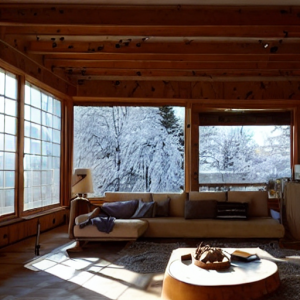 Maximizing the use of natural sunlight during the winter can contribute significantly to both the warmth and ambiance of your home. Here’s a detailed exploration of how you can effectively leverage daylight:
Maximizing the use of natural sunlight during the winter can contribute significantly to both the warmth and ambiance of your home. Here’s a detailed exploration of how you can effectively leverage daylight:
- Daylight Utilization Strategies:
- Strategic Curtain Management: During the daylight hours, you should open your curtains and blinds so that natural sunlight can enter your living spaces. To maximize exposure, position them such that they are entirely drawn aside, exposing windows and inviting sunshine to penetrate deeper into the rooms.
- Consider Sheer Fabrics: If you are concerned about privacy, you might want to think about utilizing sheer curtains, which allow sunlight to enter while offering some degree of privacy. Shades of sunshine are diffused by sheer materials, resulting in an environment that is warm and inviting.
- Solar Heat Gain:
- Understanding Solar Heat: When sunlight enters your home through windows, it has the potential to contribute to solar heat gain because sunlight is a source of heat. During the winter months, windows that face south are often exposed to more sunshine, which makes them an advantageous choice for warming purposes.
- Utilizing South-Facing Windows: Make it a priority to open the curtains and blinds on windows that face south to take advantage of the maximum amount of sunlight. This is something that can be very useful in cooler locations.
- Nighttime Heat Retention:
- Closing Curtains at Night: As the evening temperatures drop, closing the drapes and blinds in your home helps to insulate them and maintain the warmth that has been accumulated throughout the day. When you want to improve the insulation, use drapes that are heavier or that have a thermal lining.
- Consider Insulated Window Treatments: If you want to provide an additional barrier against heat loss, you can consider investing in insulated drapes or shades. By preventing heat from escaping through the windows, these specifically designed treatments can insulate the interior of the building.
- Ambiance and Well-Being:
- Enhancing Indoor Lighting: Your home will not only be warmer when natural sunshine is present but the overall lighting quality will also be improved. It lessens the requirement for artificial lighting during the day, which has a beneficial effect on the amount of energy that is consumed as well as your monthly electricity cost.
- Biophilic Design: Increased well-being has been associated with spending time in nature, even if it’s just from exposure to sunlight. It is possible that the presence of natural light in your living areas can have a beneficial effect on both your mood and your productivity.
- Window Maintenance:
- Clean Windows Regularly: More sunshine can enter without being blocked by windows that have been cleaned. The interior and outside of windows should be cleaned regularly to eliminate debris, dust, and any other obstructions that could potentially restrict the amount of natural light that enters the room.
- Smart Home Technology:
- Automated Window Treatments: Have you given any thought to the possibility of installing smart window treatments that can be set to open and close at predetermined times? It is possible to maximize the use of sunlight and the retention of heat without making any adjustments manually.
Incorporating these tactics into your winter routine will allow you to make the most of the natural sunshine that is available to you, contributing to the creation of a warm and pleasant ambiance within your house while also adding to the efficiency of your energy use. Comfort and atmosphere can be improved during the winter months by the implementation of these practices, which include optimizing window treatments and gaining an awareness of solar heat gain.
Dont Forget About Insulation
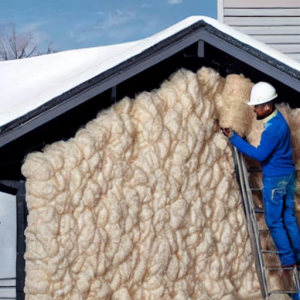 When it comes to reducing the amount of heat that escapes from your home and improving its overall energy efficiency, ensuring that your home has adequate insulation is of the utmost importance. Creating a thorough insulation strategy that will contribute to a warmer and more cost-efficient living environment can be accomplished by concentrating on important areas such as the attic, walls, and basement.
When it comes to reducing the amount of heat that escapes from your home and improving its overall energy efficiency, ensuring that your home has adequate insulation is of the utmost importance. Creating a thorough insulation strategy that will contribute to a warmer and more cost-efficient living environment can be accomplished by concentrating on important areas such as the attic, walls, and basement.
Start by determining the amount of insulation that is present in your attic. When there is sufficient insulation in the attic, it serves as an important barrier that prevents heat from escaping through the roof. Fiberglass, cellulose, and foam board are all examples of different types of insulation materials, and each of these materials offers a different level of efficacy. Give some thought to seeking the advice of an expert to ascertain the sort of insulation and thickness that would be most appropriate for your particular attic space.
Moving on to the walls, you should make certain that they are well insulated to create a thermal envelope that is continuous around your home. Insulating walls helps to manage temperatures inside a building by preventing heat from escaping via surfaces that are exposed to the outside. The insulation in exterior walls serves as a buffer against the temperature variations that occur outside, making this a particularly important consideration.
In the process of insulating the basement, it is important to pay attention to both the walls and, if applicable, the ceiling. Uninsulated basements, which are frequently in close touch with the ground, can be a substantial source of heat loss because of their proximity to the ground. Materials such as stiff foam boards or spray foam insulation can be utilized to fulfill the goal of insulating the walls of a basement. In addition, if the ceiling of the basement is unfinished, insulating it is an effective way to establish a thermal barrier between the basement and the rest of the living rooms in the house.
The R-value, which is a measurement of heat resistance, should be taken into consideration while choosing insulation materials. Higher R-values suggest that the insulation function is more effective. The appropriate R-value, on the other hand, may change depending on a variety of circumstances, including the environment, the local building codes, and the particular region of application.
In addition to the insulation itself, you need to make sure that your property is correctly sealed to prevent air leaks, which can reduce the efficiency of the insulation. Avoid allowing conditioned air to escape through any holes, including gaps around windows, doors, and any other potential openings.
Not only does investing in good insulation help to keep the warmth inside your home, but it also results in cost savings on your heating expenses over the medium and long term. When insulation is installed, the initial investment pays off over time by lowering the amount of heating that is required continuously and increasing energy efficiency.
It is recommended that you seek the advice of insulation professionals or energy auditors to achieve a thorough strategy. They can make advice that is personalized to your home based on its particular qualities, ensuring that your insulation approach corresponds with both your efficiency goals and the specific requirements of your living space.
Programmable Thermostat Magic
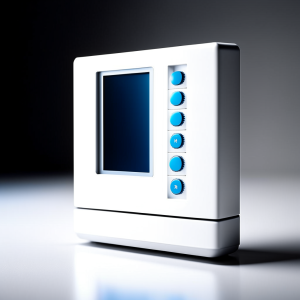 Investing in a programmable thermostat should be considered a proactive step toward optimizing the amount of energy that is consumed in your home. This intelligent device provides a flexible and automatic method of controlling the temperature, which makes a substantial contribution to both the level of comfort and the amount of money saved.
Investing in a programmable thermostat should be considered a proactive step toward optimizing the amount of energy that is consumed in your home. This intelligent device provides a flexible and automatic method of controlling the temperature, which makes a substantial contribution to both the level of comfort and the amount of money saved.
Automated Temperature Adjustments: One of the most significant advantages of a programmable thermostat is its capacity to adjust to the routines that you follow daily. Through the use of a thermostat that allows you to pre-set temperature adjustments based on your schedule, you can ensure that your home is heated effectively, preventing the waste of needless energy when it is not required.
Energy Savings through Setback Settings: The use of programmable thermostats gives you the ability to adopt setback settings during times when you are not there or when you are sleeping. In these circumstances, lowering the temperature will prevent your heating system from working harder than it needs to to keep up with the demand. The Department of Energy of the United States of America reports that a reduction in temperature of merely one degree can result in savings of up to three percent on home heating expenses.
Tailored Comfort Levels: These gadgets give you the ability to modify the temperature settings to cater to your own needs. You can set the thermostat to adjust the temperature immediately before you arrive at your house, which will ensure that your living space is comfortable when you get back. This individualized method improves both the energy efficiency of your home as well as your overall satisfaction with the climate inside your home.
Optimizing Heating Cycles: It is possible to achieve more efficient heating cycles with the help of programmable thermostats. As a result of the system’s ability to work with higher precision and reduce wasteful energy expenditure, it can maintain constant temperatures during times when it is inhabited and alter those temperatures during times when it is not occupied.
Smart Thermostats and Connectivity: The development of technology has resulted in the introduction of smart thermostats, which provide additional functions such as the ability to manage the thermostat remotely through the use of smartphone applications and the ability to integrate with home automation systems. A level of control and energy management that has never been seen before is provided by these features, which enable homeowners to monitor and modify the temperature settings in their homes even when they are not present.
Installation and Compatibility: In most cases, the installation of a programmable thermostat is a basic process, and a significant number of models are compatible with predefined heating systems. Nevertheless, it is of the utmost importance to select a thermostat that is compatible with your heating, ventilation, and air conditioning system and that caters to the particular requirements of your residence.
Considerations for Usage: Even though programmable thermostats are extremely efficient, to get the most of their benefits, careful programming is required. It is possible to ensure that the thermostat functions in a manner that is compatible with your lifestyle by first gaining an understanding of your daily routine and then altering the settings accordingly.
Layer Up and Get Cozy
 To significantly improve your level of comfort throughout the winter, you should consider experimenting with the straightforward yet efficient method of personal layering before resorting to adjusting the thermostat. Taking this method not only helps you save money on energy costs, but also makes your interior environment more comfortable and gives you more control over it.
To significantly improve your level of comfort throughout the winter, you should consider experimenting with the straightforward yet efficient method of personal layering before resorting to adjusting the thermostat. Taking this method not only helps you save money on energy costs, but also makes your interior environment more comfortable and gives you more control over it.
Clothing as Insulation: When you think of your clothing, you should think of it as an additional layer of bodily insulation. A barrier against the chill can be created by wearing cozy sweaters, thermal socks, and comfortable slippers. This allows for warmth to be provided without having to rely exclusively on heating systems. Materials like wool and fleece, which are well-known for their exceptional insulating capabilities, should be chosen.
Footwear Matters: The sensation of being chilly inside might be considerably exacerbated by having cold feet. To maintain the comfort of your feet, you should get insulated slippers or warm socks. Not only does this increase your warmth, but it also decreases the likelihood that you will need to raise the temperature on the thermostat to compensate for chilly extremities.
Layering for Bedtime Comfort: The idea of layering should be extended to include your bedding. Use additional blankets to create a layering effect on your bed rather than instantly going for higher thermostat settings when you go to bed. Through the use of a combination of lightweight and heavier blankets, you can modify the layers according to your comfort requirements, creating a warm and cozy cocoon.
Understanding the Science of Layering: The technique of layering is one that has been around for a long time and is based on the concepts of conserving and capturing body heat. By creating pockets of warm air, each layer contributes to the overall insulation of the structure. You will be able to maintain comfort with less reliance on artificial heating thanks to this technology, which effectively mimics the natural way in which our bodies regulate temperature.
Benefits Beyond Energy Savings: The benefits of mastering the technique of layering go well beyond the realm of energy conservation. Through the reduction of the carbon footprint that is connected with greater heating, it encourages a lifestyle that is more environmentally friendly. Additionally, adding a touch of coziness and control over your surrounding environment can be accomplished by stacking your belongings to achieve a personalized interior warmth.
Seasonal Wardrobe Transition: Thinking about incorporating additional insulating pieces into your wardrobe as winter draws near is something you should consider doing. Fabrics with a greater thickness, thermal undergarments, and accessories such as scarves and gloves are included in this category. If you take the initiative to adjust your wardrobe to the shifting seasons, you will be better prepared for a winter spent indoors that is both more energy-efficient and more comfortable.
Mindful Thermostat Adjustments: You will be able to approach the process of adjusting the thermostat with greater mindfulness if you incorporate the technique of layering into your habit. Even relatively little adjustments, such as reducing the temperature on the thermostat by a few degrees, become doable when combined with the additional warmth that is offered by layered clothes and bedding.
Maintain Your Heating System
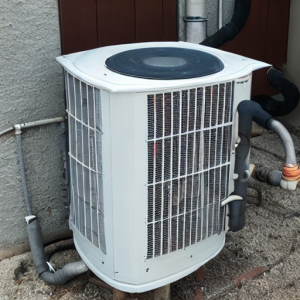 A heating system that is well-maintained and operates well is essential not just for maintaining a comfortable temperature throughout the winter months but also for minimizing the amount of money spent on electricity. To guarantee that your heating system is operating at its highest possible level, you should make routine maintenance and professional attention a priority.
A heating system that is well-maintained and operates well is essential not just for maintaining a comfortable temperature throughout the winter months but also for minimizing the amount of money spent on electricity. To guarantee that your heating system is operating at its highest possible level, you should make routine maintenance and professional attention a priority.
Furnace Filter Maintenance: To get started, you should pay particular attention to the filters in your furnace. To keep the airflow at its optimal level, which is necessary for efficiency, these filters play a very important function. To prevent the accumulation of dust and debris, the filters should be cleaned regularly or replaced if necessary. Filters that are clogged not only restrict the flow of air but also require the system to work harder, which increases the amount of energy that is consumed.
The Role of Airflow in Efficiency: One of the most important things is to comprehend the connection between airflow and heating efficiency. The system can distribute heat uniformly throughout your home thanks to unrestricted airflow, which in turn reduces the amount of work that the furnace needs to do. This leads to an increase in comfort as well as a reduction in energy use.
Professional Inspection and Servicing: You mustn’t undervalue the significance of having a professional assist you with your heating system. Before the advent of cold winter, it is recommended that you schedule a comprehensive inspection and servicing. Certified technicians can recognize and resolve potential problems that could potentially jeopardize the effectiveness of the system.
Preventive Maintenance Benefits: Investing in preventative maintenance will, in the long term, yield positive returns. Not only does it assist in the early detection and resolution of potential issues, but it also adds to the extension of the lifespan of your heating system. Performing routine inspections helps to verify that all of the components are in good working condition, which in turn increases productivity and decreases the likelihood of unanticipated breakdowns.
Efficiency Upgrades: You should think about improving your heating system to improve its efficiency. Typically, more recent versions come equipped with high-tech features that are designed to maximize energy efficiency. The initial expenditure could appear to be substantial; however, the potential savings in energy costs over the long term and the possibility of receiving rebates can make this a financially prudent choice.
Thermostat Optimization: Your heating system is being controlled by the thermostat, which acts as the control center. In addition to making sure it is in good functioning condition, you should think about purchasing a programmable thermostat so that you can precisely manage the temperature. It is possible to greatly contribute to energy savings by programming your thermostat to lower temperatures during periods of inactivity. Additionally, this can be accomplished without compromising comfort.
Balancing Heating Zones: Ensure that each of the heating zones in your home is balanced if your property has numerous heating zones. By ensuring that the zones are properly balanced, heat can be distributed uniformly, which helps to prevent some areas from being overworked and promotes overall system efficiency.
Tame the Monster Energy Vampires
At this point, our homes are crammed with a wide variety of electronic devices and appliances. A significant number of homes could be unaware of the fact that these gadgets continue to consume power even when they are switched off, which is a factor that contributes to what is usually referred to as “energy vampires” or “standby power.” Despite its seeming insignificance, this energy loss can have a considerable impact on your monthly electricity cost. Let’s dig deeper into the specifics of how to deal with these energy vampires and identify them accordingly.
Understanding Standby Power: When electronic gadgets and appliances are in a standby mode, also known as turned-off mode, they consume a certain amount of energy. This is referred to as standby power. Even though each of these devices may only require a modest amount of electricity on its own, when taken as a whole, they can be responsible for a sizeable fraction of your overall energy consumption.
Common Culprits: The first thing that needs to be done to solve this problem is to identify energy vampires. TVs, chargers, computers, game consoles, and kitchen appliances are just some of the products that fit within this category. They are also included in this category. Any device that has a digital clock or a standby light installed is a possible source of the problem.
The Power Strip Solution: The utilization of power strips is a realistic method that can be utilized to battle standby power. Organize your electronic items into groups based on how they are used, and then connect them to power strips. Simply turning off the power strip is all that is required when these gadgets are not being used. Not only does this cut off the connection to the standby power supply, but it also provides the benefit of being able to control several devices with just one switch.
Chargers and Phantom Loads: Even though they are not actively charging a device, chargers for a variety of devices, including laptops and smartphones, are renowned for draining power continuously. Chargers should be unplugged when they are not being used to get rid of this phantom load and prevent power usage that is not essential.
Smart Power Strips: Investing in smart power strips is a good idea if you want to enjoy additional convenience. It is the purpose of these strips to identify when electronic gadgets are in standby mode and then to automatically cut off power to the outlets that are concerned. This technique offers a hands-free method for lowering the amount of power drawn from standby mode.
Educating Household Members: The importance of educating your family about the concept of backup power cannot be overstated. Members of the household should be encouraged to turn off electronic gadgets when they are not in use and to make appropriate use of power strips. Changes in behavior that are quite straightforward can have a large impact on energy savings.
Reducing Environmental Impact: Reduced standby power consumption is not only beneficial from a financial standpoint, but it also contributes to environmental sustainability. Reducing the amount of energy that is consumed results in a reduced carbon footprint, which contributes to broader initiatives in conservation and environmental responsibility.
Regular Audits and Updates: Conduct regular audits of your electronic gadgets to determine the amount of power they consume when they are in standby mode. The evolution of technology has resulted in newer devices typically being fitted with more energy-efficient features. It is a good idea to think about replacing older appliances with newer models that are specially intended to save energy.
Set the Ceiling Fan in Reverse
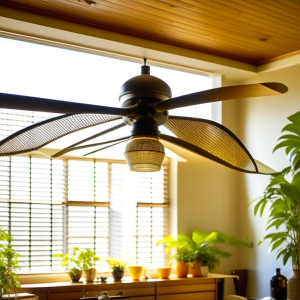 Beyond its cooling capabilities in the summer, your ceiling fan can be a secret weapon for maintaining a cozy home during the winter. A simple adjustment in the fan’s rotation and speed can contribute significantly to redistributing warm air and enhancing overall comfort.
Beyond its cooling capabilities in the summer, your ceiling fan can be a secret weapon for maintaining a cozy home during the winter. A simple adjustment in the fan’s rotation and speed can contribute significantly to redistributing warm air and enhancing overall comfort.
Understanding Ceiling Fan Rotation: The majority of ceiling fans come with a motor that can be reversed, which in turn enables you to adjust the direction in which the blades point. Set your fan to rotate in a clockwise direction throughout the winter months. The circulation of the fan is altered as a result of this modification, which results in the formation of an updraft that re-distributes warm air that is trapped near the ceiling into the living space.
Warm Air Redistribution: There is a tendency for warm air to rise and accumulate close to the ceiling in a room that is equipped with a heating system. In essence, you can assist the warm air to circulate back down by setting the ceiling fan to rotate in a clockwise direction at a low speed. The circulation of air helps to minimize the stratification of heat, which in turn helps to keep the temperature of the space more consistent throughout.
Striking the Right Balance: Finding the optimal balance between the speed of the fan and the rotation of the fan is the key to achieving maximum comfort. In general, during the winter, it is advised to travel at a slow speed in the direction of clockwise rotation. Through the use of this mild rotation, warm air is properly redistributed without the creation of a draught that may potentially feel excessively cool.
Complementing Your Heating System: Utilising your ceiling fan in a planned manner can also serve as a supplement to your primary source of warmth. Through its ability to improve air circulation, the fan contributes to the heating system’s ability to function more effectively. The result of this is that it can lead to savings on energy as well as a more consistent and comfortable environment inside the building.
Energy-Efficient Heating: As a result of the ceiling fan’s ability to properly circulate warm air, you could discover that you can reduce the temperature on your thermostat by a few degrees without compromising on the level of comfort. The use of an energy-efficient strategy results in lower expenditures for heating and a smaller impact on the environment.
Ceiling Fan Size and Placement: There is a correlation between the size of your ceiling fan and its placement, which can affect how effectively it distributes warm air. Fans with a greater blade spread may be required for larger spaces, and the correct arrangement of the fans will guarantee that air circulation is distributed evenly across the whole room.
Seasonal Transition: During the shift from winter to warmer months, it is important to remember to change the rotation of the ceiling fan to reverse anticlockwise. Through the promotion of air circulation that supports the body’s natural cooling mechanisms, this setting can generate a refreshing breeze, which provides comfort during the warm months.
Maintenance for Optimal Performance: It is vital to do routine maintenance on your ceiling fan to get optimal performance. Dust that has formed on the blades can impede the flow of air and reduce performance. Spend the time to clean the blades of the fan and make sure that it continues to function without any problems throughout the year.
Embrace the Power of Rugs
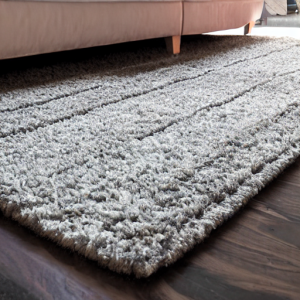 When winter arrives, the feeling of chilly floors can permeate your home, resulting in an ambiance that is less inviting than it would have been otherwise. Investing in thick rugs or carpets is a straightforward yet effective method that may be utilized to prevent the chill from occurring. These modifications provide a living area that is not only more comfortable but also warmer and cozier due to their contribution.
When winter arrives, the feeling of chilly floors can permeate your home, resulting in an ambiance that is less inviting than it would have been otherwise. Investing in thick rugs or carpets is a straightforward yet effective method that may be utilized to prevent the chill from occurring. These modifications provide a living area that is not only more comfortable but also warmer and cozier due to their contribution.
Understanding the Cold Floor Dilemma: It is possible for bare flooring to act as conduits for heat loss, particularly in climates that are cooler. They tend to take in and hold onto the cold, which results in the entire room feeling colder. This not only has an impact on the level of physical comfort in your house, but it also has the potential to increase the amount of energy that is consumed because heating systems have to work harder to compensate for heat loss.
Adding an Insulating Layer: Rugs and carpets that are thick and thick serve as insulating layers that provide a barrier between your feet and the cold floor. Not only does this additional insulation prevent heat from escaping, but it also provides a surface that is more comfortable to walk on, which together contribute to an overall increase in the temperature of your living spaces.
Strategic Placement for Maximum Impact: If you spend the most time in certain rooms, such as the living room, bedroom, or home office, you should give some thought to strategically placing rugs in such locations. These high-traffic areas are the ones that benefit the most from the insulating capabilities of rugs, which ensure that the warmth is concentrated where it is most needed.
Material Matters: It is important to pay attention to the materials while choosing rugs or carpets for the winter season. To give one example, wool is an ideal choice because of the natural insulating characteristics that it possesses. Not only does it make the floor seem more comfortable, but it also gives it a sumptuous sensation underfoot. A further benefit of high-pile rugs is that they provide superior insulation and have a more comfortable feel.
Enhancing Home Decor: Not only do rugs and carpets serve a practical purpose, but they are also adaptable components that can enhance the decorating of your home. Make sure that the colors, patterns, and textures you choose are complementary to the design plan you already have. This method guarantees that your home decor not only looks wonderful but also has a useful role in the sense that it helps to keep your home warm without sacrificing its aesthetic appeal.
Maintenance and Cleanliness: The lifetime and continuous effectiveness of rugs and carpets are directly correlated to the frequency with which they are maintained. Through the use of a hoover, dust, and particles that have the potential to build and reduce their insulating characteristics are removed. Clean rugs also help to a healthy interior atmosphere, which is another consideration.
Customization for Room Ambiance: The aesthetic preferences and heating requirements of various rooms are distinct from one another. Make sure that the selection of rugs you make is in line with the atmosphere that you want to establish. When it comes to bedrooms, for instance, a velvety rug can lend an air of luxury to the space, whilst in high-traffic areas, a rug that is both long-lasting and simple to clean might be more suitable.
Budget-Friendly Solutions: The cost of purchasing a rug does not have to be prohibitive. There are solutions available that are not only stylish but also reasonably priced, plus they offer insulation. Look for sales that occur throughout specific seasons or think about smartly layering smaller rugs to get the same effect.
Take Advantage of Government Programs
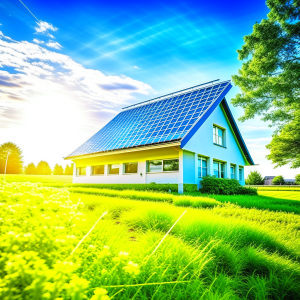 Starting the process of making improvements to the energy efficiency of your home is beneficial not just to the environment but also to your financial situation. Fortunately, a variety of government programs and utility companies offer a variety of incentives, rebates, and discounts to homes to encourage them to adopt energy-saving solutions. This is a comprehensive guide that will help you navigate various products and make the most of the potential savings you have.
Starting the process of making improvements to the energy efficiency of your home is beneficial not just to the environment but also to your financial situation. Fortunately, a variety of government programs and utility companies offer a variety of incentives, rebates, and discounts to homes to encourage them to adopt energy-saving solutions. This is a comprehensive guide that will help you navigate various products and make the most of the potential savings you have.
Government Initiatives: At the local, state, and federal levels of government, there are frequent programs that are designed to encourage energy efficiency. To encourage homeowners to make investments in energy-saving devices, these programs may include financial assistance in the form of grants, tax credits, or subsidized services. Visit the official website of your local government or get in touch with the departments that are relevant to investigate the available opportunities.
Utility Company Programs: The advancement of energy efficiency is being actively pursued by utility companies, which are active participants. Customers are frequently encouraged to adopt more energy-efficient practices through the provision of several programs that they frequently offer. Refunds may be offered for the installation of energy-efficient heating, ventilation, and air conditioning (HVAC) systems, the updating of equipment, or even the performance of home energy audits. To learn more about the available programs, get in touch with your utility provider.
Home Energy Audits: Energy audits for homes can be provided at no cost or a reduced cost by certain government programs or utility companies. These audits evaluate the utilization of energy in your home, pinpoint areas that may be improved, and provide recommendations that are specific to your situation. Taking advantage of this service not only enables you to gain useful insights about the efficiency of your house, but it also has the potential to unlock eligibility for further incentives.
Rebates for Appliance Upgrades: Check for incentives that are available from both government programs and utility companies when you are in the process of replacing your appliances. Home appliances that have earned the Energy Star certification are typically eligible for rebates since they meet high energy efficiency standards. These rebates have the potential to greatly reduce the initial investment required to upgrade to more energy-efficient appliances.
Weatherization Programs: The process of weatherizing your home, which includes air leaks being sealed, insulation being added, and windows and doors being upgraded, can result in significant savings on energy costs. Numerous government programs provide financial help for initiatives related to weatherization. If you want to make your home more pleasant and energy efficient, you should investigate these possibilities.
Solar Energy Incentives: The investigation of solar energy subsidies is necessary for individuals who are contemplating the installation of solar panels. Credits on taxes or other financial incentives are frequently offered by government programs to encourage the adoption of solar systems. In addition, there are utility providers that provide net metering programs, which enable you to earn credits for the extra energy that is produced by your solar panels.
Local Community Programs: There is also the possibility of community-level efforts, which are typically organized by local environmental groups or nonprofit organizations. Activities such as workshops, incentives, or community-driven projects may be provided by these programs to improve energy efficiency. Make use of the community resources available in your area to learn about opportunities that are unique to your region.
Financing and Loan Programs: In addition to providing direct incentives, several programs also provide favorable financing alternatives or loans with low interest rates to encourage house upgrades that are more energy efficient. By providing households with access to these financial tools, they can make investments in projects that will result in long-term savings on energy costs.
Staying Informed: Incentive programs and programs that encourage energy saving are dynamic, with offerings changing over time. Regularly, check the websites of the government, the information provided by power companies, and the bulletins distributed by the community. Taking the initiative to look for chances that are now available will ensure that you do not lose out on any potential cost reductions.
The post Budget-Friendly Energy Hacks for a Cozy Winter Home appeared first on Survivalbite.
The Article Budget-Friendly Energy Hacks for a Cozy Winter Home First Appeared ON
: https://ad4sc.com










Comments are closed